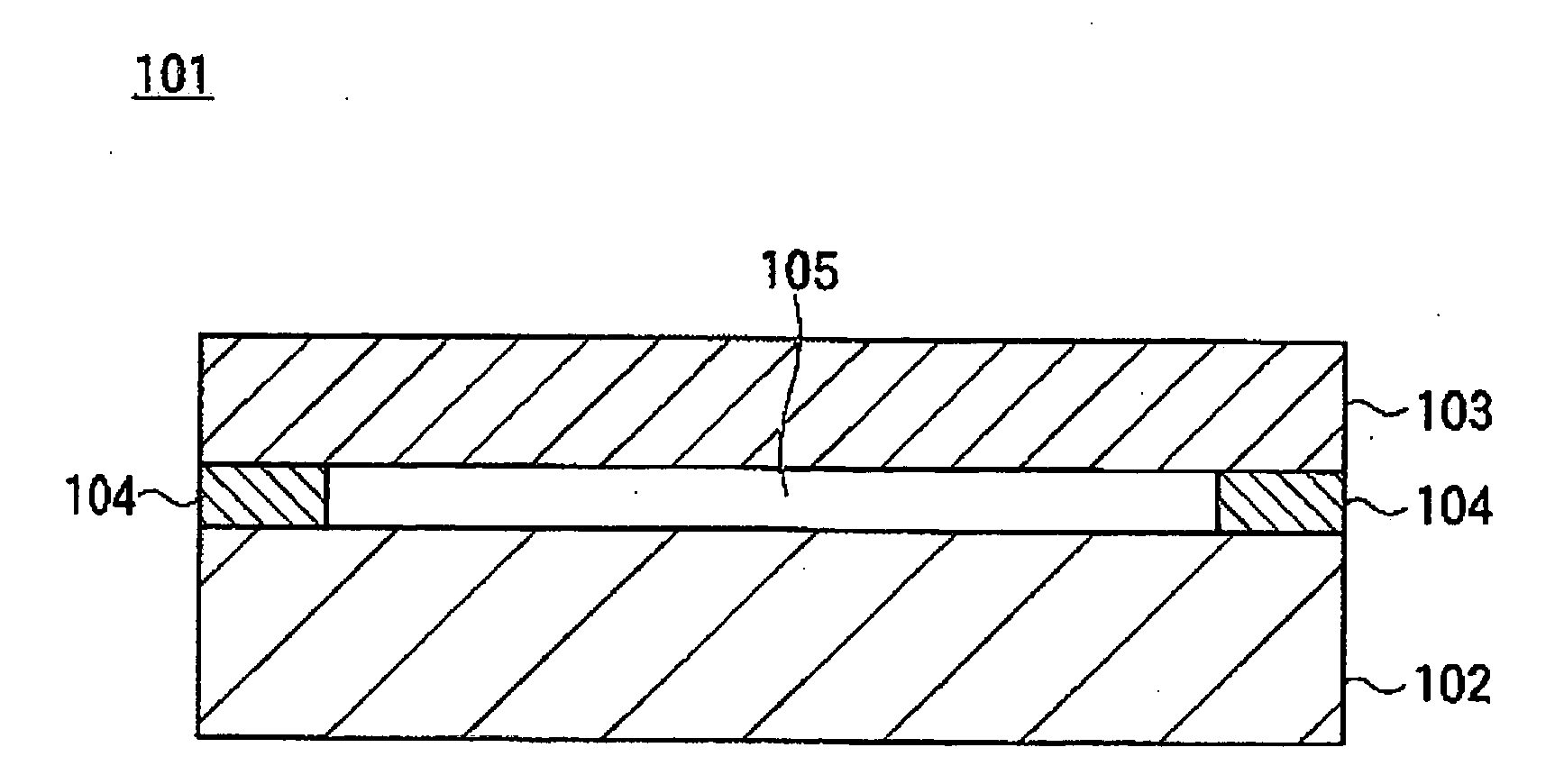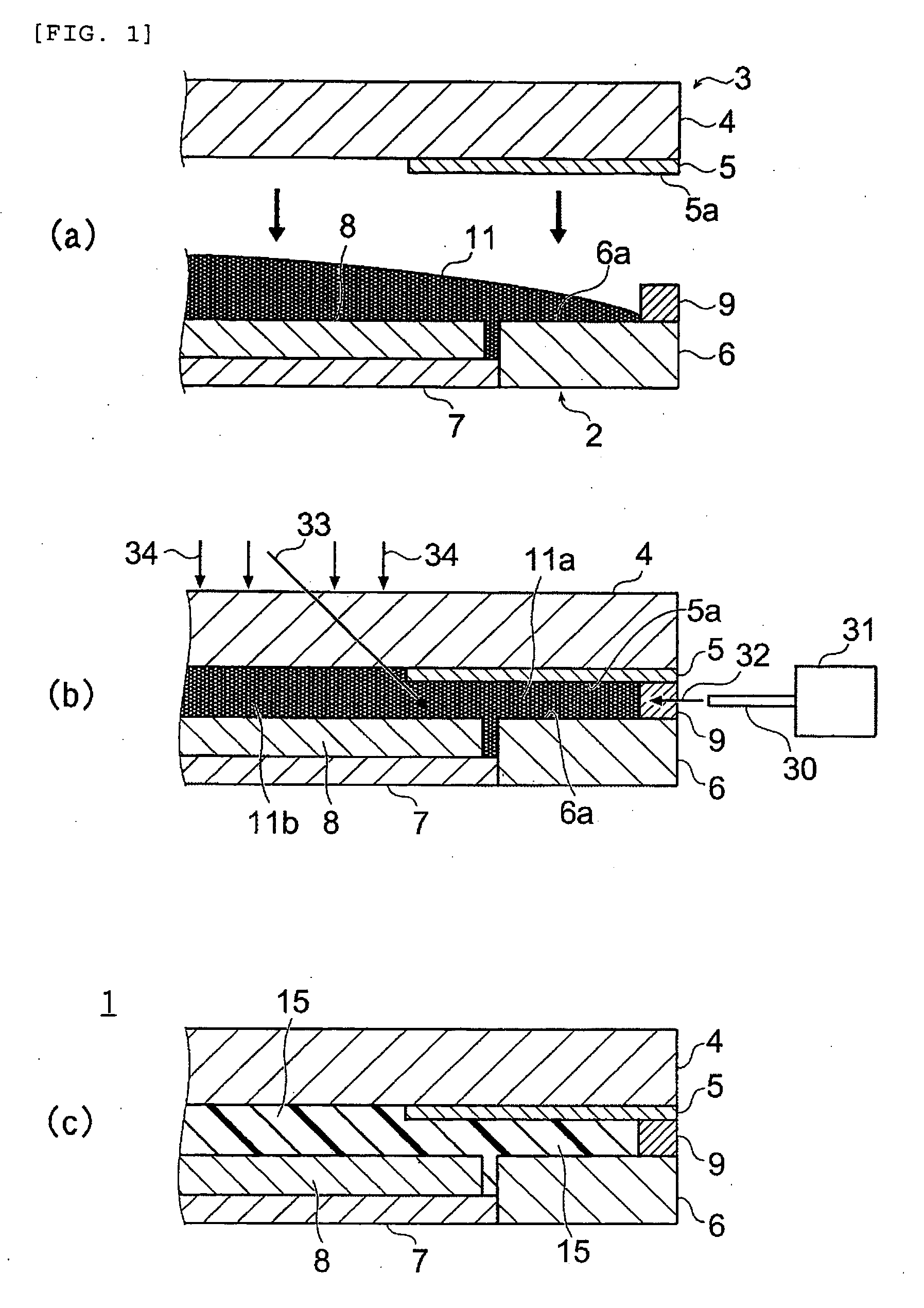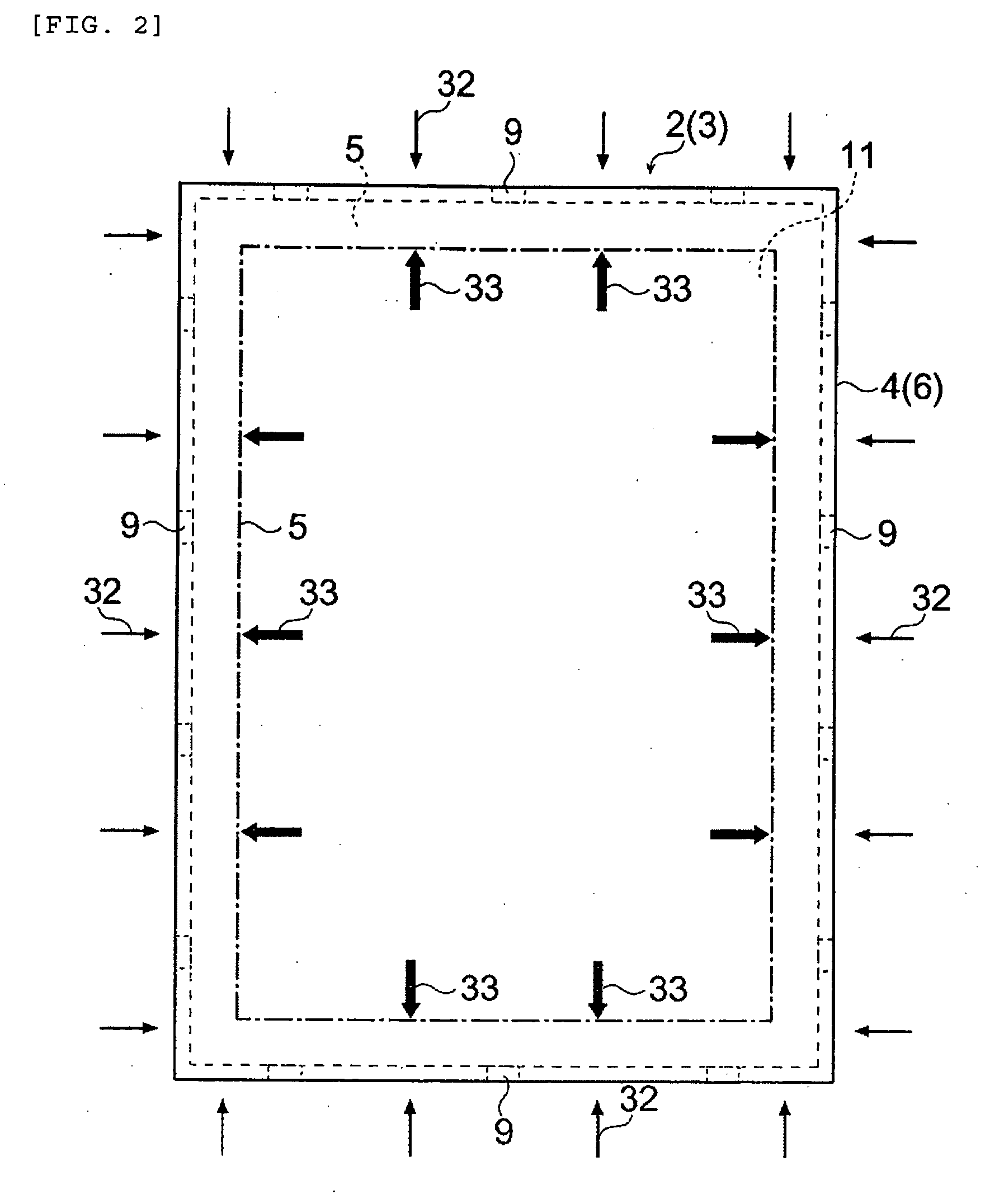Method for manufacturing image display device
a technology of image display device and manufacturing method, which is applied in the direction of manufacturing tools, electric/magnetic/electromagnetic heating, instruments, etc., can solve the problems of display defects, deformation of optical glass, and gap 105, so as to reduce the amount of thermal polymerization initiator used, reduce the influence of heat on various plastic materials used near the image display device, and reduce the effect of cured
- Summary
- Abstract
- Description
- Claims
- Application Information
AI Technical Summary
Benefits of technology
Problems solved by technology
Method used
Image
Examples
experimental example 1-1
Cure Ratio of Resin Compositions
[0121]The resin compositions a and b (0.2 g each) were applied dropwise to the inner areas, surrounded by spacers, on liquid crystal display substrates as shown in FIG. 1(a), and acrylic plates each having a 2.0-mm wide light-shielding member and serving as a protection member were placed on the spacers. The resin compositions were photo-cured under conditions A to D described below, whereby liquid crystal display devices were produced as shown in Table 1.
[0122]The acrylic plates were removed from the obtained liquid crystal display devices, and the cure ratios of the cured products of the resin compositions a and b were measured in the manner described later. The results are shown in Table 1.
Curing Conditions A:
[0123]The resin composition was irradiated with UV rays at an integrated light quantity of 5,000 mJ using a UV lamp (product of USHIO Inc.) placed at a position about 10 cm away from the acrylic plate to be photo-cured, whereby a liquid crysta...
experimental example 1-2
[0128]The same procedure as in Experimental Example 1-1 was repeated except that an acrylic plate having a 5.0 mm-wide light-shielding member was used as the protection member. Liquid crystal display devices were produced using the resin compositions a and b under different curing conditions, and the cure ratio of the cured resin in each of the obtained liquid crystal devices was measured. The results are shown in Table 2.
TABLE 1Experimental Example 1-1 (Light-shielding member: 2 mm)Cure ratio of resin compositionLiquid crystalDirectly belowdisplay deviceCuringCentral portion oflight-shielding(resin composition)conditionsdisplay unitmember (2 mm)Resin composition aA95%50%B95%95%C95%95%D95%95%Resin composition bA95%50%C95%95%
Curing conditions A: Only the irradiation with UV rays from the acrylic plate side.
Curing conditions B: The irradiation with UV rays from the acrylic plate side and heating using a heater.
Curing conditions C: The irradiation with UV rays from the acrylic plate si...
experimental example 2
Measurement of Various Properties Of Cured Resins
[0132]The resin compositions a to g were applied dropwise to white glass plates having a thickness of 100 μm so as to have a predetermined thickness. The glass plates were carried into a UV conveyer, whereby the cured products of the resins having a predetermined thickness were obtained. These were used as samples. Each of the samples was measured for “light transmittance,”“storage elastic modulus,”“curing shrinkage ratio,” and “surface roughness,” as follows.
[Light Transmittance]
[0133]The light transmittance in the visible range was measured for each sample (the thickness of the cured resin: 100 μm) using an ultraviolet and visible spectrophotometer (V-560, product of JASCO Corporation) and was found to be 90% or more for all the samples.
[Storage Elastic Modulus]
[0134]The storage elastic modulus (Pa, 25° C.) was measured for each sample at a measurement frequency of 1 Hz using a viscoelasticity measuring apparatus (DMS 6100, product ...
PUM
| Property | Measurement | Unit |
|---|---|---|
| Temperature | aaaaa | aaaaa |
| Fraction | aaaaa | aaaaa |
| Fraction | aaaaa | aaaaa |
Abstract
Description
Claims
Application Information
 Login to View More
Login to View More - R&D
- Intellectual Property
- Life Sciences
- Materials
- Tech Scout
- Unparalleled Data Quality
- Higher Quality Content
- 60% Fewer Hallucinations
Browse by: Latest US Patents, China's latest patents, Technical Efficacy Thesaurus, Application Domain, Technology Topic, Popular Technical Reports.
© 2025 PatSnap. All rights reserved.Legal|Privacy policy|Modern Slavery Act Transparency Statement|Sitemap|About US| Contact US: help@patsnap.com



